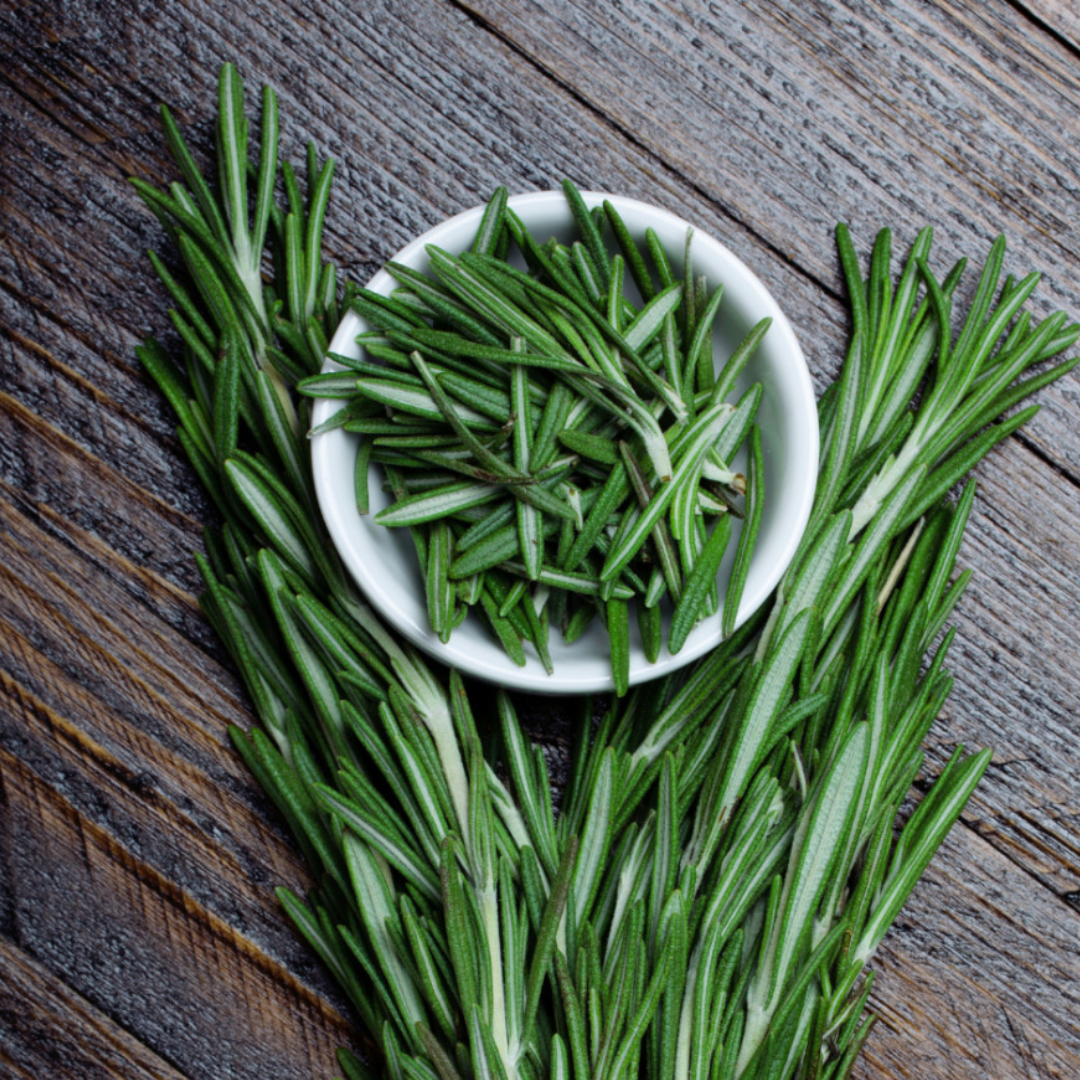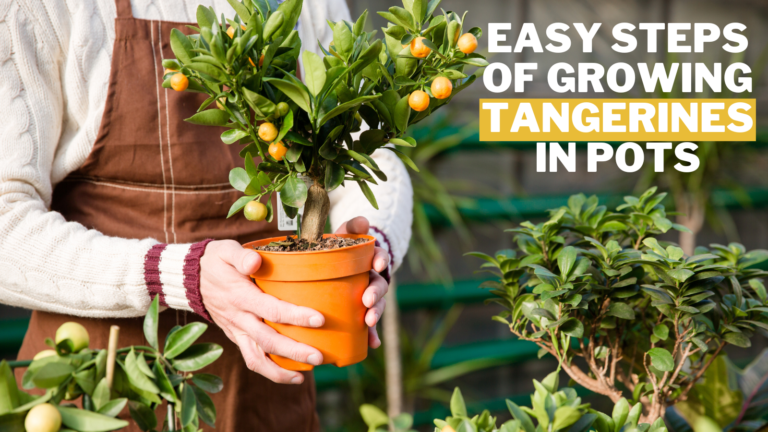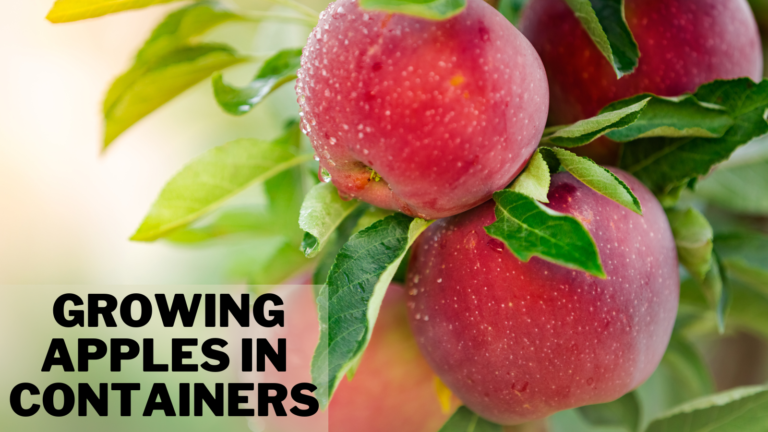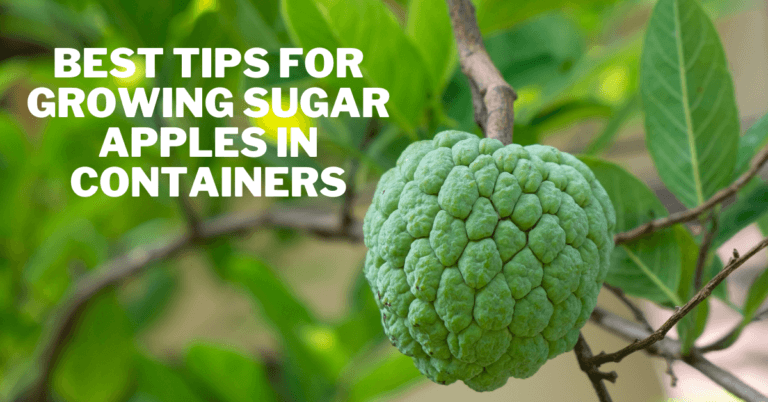Perfect Tips Of Growing Rosemary In A Container
Perfect Tips Of Growing Rosemary In A Container
Rosemary is a flavourful culinary herb with needle-like leaves and a strong taste. Growing rosemary in pots is surprisingly straightforward, and the herb may be used to bring flavour and diversity to a range of gourmet recipes. Continue reading about growing Rosemary in a container.
Origin Of Rosemary (Salvia rosmarinus)
Salvia rosmarinus, or rosemary, is a Mediterranean shrub with aromatic, evergreen, needle-like leaves and white, pink, purple, or blue flowers.
It was previously known under Rosmarinus officinalis, which is now a synonym. It belongs to the Lamiaceae family, which is comprised of many other medicinal and culinary plants. The word “rosemary” comes from “ros marinus.”
Rosemary is an aromatic evergreen plant with hemlock needle-like leaves. It is native to the Mediterranean and Asia but can withstand cold temperatures. Special cultivars, such as ‘Arp,' can resist temperatures as low as -20 °C in the winter.
It can resist droughts and go without water for long periods. In several parts of the world, it is considered a potentially invasive species.
The seeds are generally tricky to germinate and grow slowly, yet the plant can live for 30 years. The upright forms can reach 1.5 m (4 ft 11 in) in height, whereas the trailing forms rarely exceed 2 m. (6 ft 7 in). The leaves are evergreen and measure 2–4 cm (¾–1½ in) in length.
Flowers are white, pink, purple, or deep blue and bloom in the spring and summer in temperate areas, but they can bloom all year in hot climes.
Rosemary has also been reported to bloom outside of its regular flowering season, as late as early December and as early as mid-February (in the northern hemisphere).
Types Of Rosemary
Pick the right variety for your garden to grow Rosemary in a Container. Here, I’ve added the most popular variety.
1. Tuscan Blue Rosemary (Rosmarinus officinalis)
With its pale blue-green leaves, the Tuscan or Tuscan Blue rosemary (Rosmarinus officinalis) is a favourite hedge in Tuscany. It is used to create hedges along the edges of fields. It's a coveted culinary rosemary variety.
2. White Rosemary (Rosmarinus officinalis albiflorus)
The erect, bushy spread of white rosemary (Rosmarinus officinalis albiflorus) makes it stand out in the landscape. Its powerful aroma attracts pollinators and makes it a good culinary choice. Hedge, border plant, or herb garden.
3. Pine Scented Rosemary (Rosmarinus angustifolius)
Rosemary with a pine aroma (Rosmarinus angustifolius) is a popular culinary herb. This rosemary has a distinct pine aroma and delicate blue-green leaves that resemble feathers.
The leaves are thinner and softer than traditional rosemary, making them a chef's favourite. Plant them as a border or in an herb garden.
4. Golden Rosemary (Rosmarinus officinalis ‘Joyce de Baggio')
Golden rosemary, also known as Golden Rain (Rosmarinus officinalis ‘Joyce de Baggio'), gives the deep green leaves a gold tint.
Several cultivars produce bright yellow to deep gold foliage that either stays true or deepens as the summer days become longer. Certain types turn green in the summer. It looks beautiful as a border in your herb garden.
5. Madeline Hill Rosemary (Rosmarinus officinalis ‘Madeline Hill')
The rosemary variety Madeline Hill (Rosmarinus officinalis ‘Madeline Hill') is winter hardy. In a sheltered area, this cultivar can survive winters in Zone 6 and possibly Zone 5.
It's frequently promoted as being rated for -15°C. This option has rich green foliage and is quite aromatic. Use it as a border, hedge, or herb garden.
6. Arp Rosemary (Rosmarinus officinalis ‘Arp')
Arp rosemary (Rosmarinus officinalis ‘Arp') is a gray-green cultivar with easy-to-grow leaves. It's a popular choice among first-timers.
Chefs prefer this rosemary type because it is one of the most fragrant. Use it as a border, hedge, or herb garden.
7. Blue Boy Rosemary (Rosmarinus officinalis ‘Blue Boy')
The dwarf or tiny rosemary cultivar Blue Boy (Rosmarinus officinalis ‘Blue Boy') is popular for containers and pots.
It can be used as a low-border plant or an indoor herb pot on a ledge. It's a handy cooking herb to have around the house.
8. Trailing Rosemary (Rosmarinus officinalis ‘Prostratus')
Trailing or creeping rosemary (Rosmarinus officinalis ‘Prostratus') is the most striking type of creeping rosemary.
This cultivar works well in a window box or pot with enough room for the plant to cascade. A waterfall effect on a wall or fence is an excellent landscaping feature.
9. Huntington Carpet Rosemary (Rosmarinus officinalis ‘Huntington Carpet')
Because of its dense core and little dieback, the Huntington Carpet cultivar (Rosmarinus officinalis ‘Huntington Carpet') is popular.
Huntington Carpet isn't as woody as other rosemary cultivars. It's an excellent choice for walls, banks, rock gardens, window boxes, and containers/pots because of its dark green foliage.
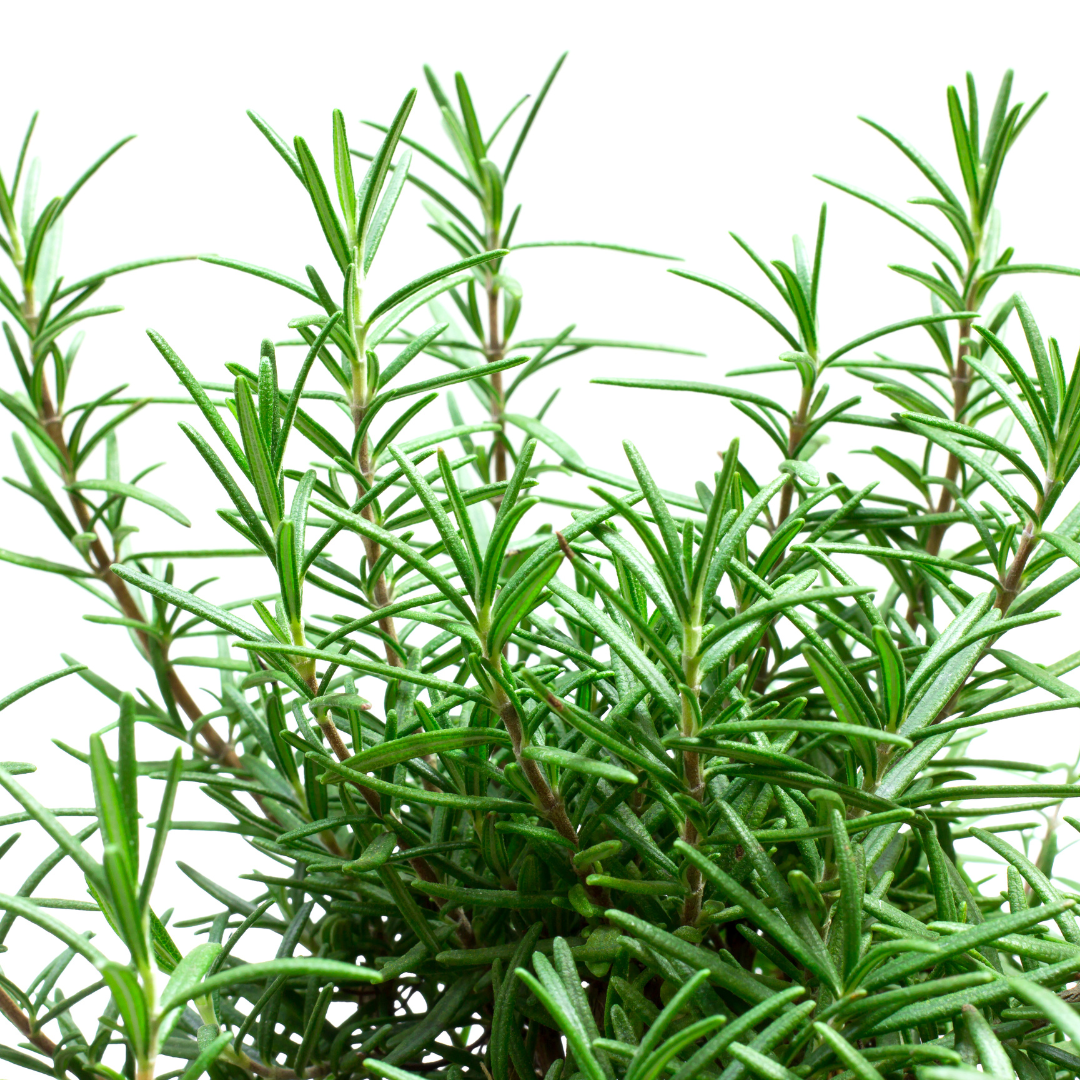
Growing Rosemary In A Container
Rosemary (Rosmarinus officinalis) is a fragrant household herb with needle-like leaves and a strong flavour. Growing rosemary in a pot is surprisingly easy, and the herb can be used to flavour and spice up various foods. Continue reading to learn how to grow rosemary in a container.
1. Choosing A Container For Growing Rosemary
Growing rosemary in a pot requires a container with at least one drainage hole and a 6 to 8-inch depth. According to Gardeners World Magazine, it should contain high-quality potting soil that is loose, well-draining and has a slow-release fertilizer.
If the container has been used before, sanitize it by soaking it in 1 part bleach to 9 parts water and thoroughly rinsing it before planting your rosemary plant.
Trailing rosemary cultivars can be grown in smaller containers, while upright rosemary cultivars demand medium to large containers. As the plant grows, you can start with a 6-8-inch deep pot and move up to a 12-inch deep pot.
2. Soil For Growing Rosemary In A Container
Growing rosemary in a pot requires a container with at least one drainage hole and a depth of 6 to 8 inches. According to Gardeners World Magazine, it should contain high-quality potting soil that is loose, well-draining and has a slow-release fertilizer.
Rosemary can be cultivated in an herb garden or pots. The majority of cultivars thrive on well-drained, loamy, acidic soil. The ideal pH for soil is between 6.0 and 7.0.
One of the most common rosemary mixes is an adjusted ordinary potting soil, which is most popular among gardeners. Any good potting soil is well-drained but not enough to support the growth of drought-tolerant plants.
Mix at least 30% horticultural sand or grit with 70% compost to simulate rosemary's Mediterranean soil. Too much sand or grit is always preferable to insufficient since it effectively reduces the chance of root rot, the most common cause of rosemary plant death.
3. Sunlight Requirements For Growing Rosemary In A Container
Rosemary needs at least 6 hours of direct sunshine daily to grow; it prefers full sun. If you wish to plant rosemary as a perennial, choose a spot not disturbed by tilling. Use a container at least 8″ deep and 12″ wide. Fill each plant with high-quality potting soil.
Next, locate a position on your patio or deck that receives full sun for at least 6-8 hours daily. Rosemary tolerates some morning shade but loves direct sunlight.
Rosemary thrives in hot, dry areas but may grow in cool or cold locations if frost protection is provided in the winter. Plant rosemary in full sun or a location with 6-8 hours of sunlight.
4. Watering Rosemary
Water rosemary frequently to keep it wet but not waterlogged. Between waterings, allow only the soil's top to dry; do not allow the soil to dry entirely.
To ensure that rosemary is adequately watered, water it until it drains out of the drainage hole. If the container rests on a drainage dish, empty it after watering.
Once established, rosemary shrubs are drought-tolerant, and submerging rather than overwatering them is preferable. Allow the top several inches of soil to dry between waterings, then moisten equally damp but not waterlogged dirt.
Water deeply and frequently after planting. Once established, rosemary may go longer without watering—perfect for water-conscious gardens—but it will thrive if watered, especially during hot, dry months. To keep the soil cool and wet, mulch the soil well with organic mulch such as sugarcane or pea straw.
5. Fertilizing Rosemary
Gardeners World Magazine recommends fertilizing potted rosemary every two weeks using an all-purpose, water-soluble fertilizer.
However, only do this if the potting soil does not already have a fertilizer. Because nutrient contents differ between fertilizers and brands, use only the amount specified on the label.
It's worth noting that too much fertilizer can be harmful—following fertilizer application, water the rosemary plant.
Too much fertilizer is not recommended because it reduces the concentration of essential oils and the taste and perfume of the leaves, which is contradictory to the ideal circumstances.
6. Pruning Of Rosemary
Remove around 2 inches of the root matter and side shoot part before repotting. For 2 to 3 days, keep the pruned branches and roots in the shade.
This gives your rosemary time to adjust to the changes. Prune the plant's lower sections regularly to eliminate old leaves that clog the soil.
If you want to reduce the plant's size, you can cut it by one-third overall. Then, wait two to three months before pruning back by one-third.
If you're only pruning rosemary to make it busier, you can remove the ends of the branches one to two inches (2.5 to 5 cm).
Your plant's roots will need to be pruned or repotted every year. Carefully remove the plant from its pot and prune the roots.
Using pruning shears or a knife, remove the lowest third of the root ball. Cut about a third of the way up the plant with two or three vertical incisions starting at the bottom of the root ball.
7. Temperature & Humidity For Growing Rosemary
Warm weather and moderate humidity levels are ideal for this shrub. Although most rosemary types cannot withstand temperatures below 30 degrees, they are heat tolerant.
Ideal temperatures for them are between 55°F and 80°F (18°C to 27°C). Furthermore, extreme humidity might cause rot and fungal difficulties without adequate air circulation around the plant.
8. Pests & Diseases Of Rosemary
Rosemary bushes are resilient, but sap-sucking pests like aphids and whitefly can cause problems. Powdery mildew is a fungal disease that can affect rosemary in humid conditions.
Regularly trim stems and branches to promote light and air circulation and reduce risk. Remove and discard any impacted leaves.
Pests and diseases are few and far between for this hardy herb. I've grown it next to aphid-infested delphiniums, but no aphids have touched my fragrant rosemary.
Certain varieties of aphids are also attracted to the herb. Powdery mildew, a fungal ailment that appears as a thin, whitish layer of mycelium on the needle-like leaves, is your primary concern. To avoid an infection, make sure you don't overwater.
9. Harvesting Rosemary
Using a garden pruner, remove leaves and branches. For kitchen usage, cut 4 to 6-inch sprigs from the tips of the branches.
Remove the leaves and stalks. Never cut more than one-third of the plant at once; this causes the plant to become stressed.
Rosemary can be picked at any time of year, though it thrives in the spring and summer. And just before the plant blooms, the leaves are most tasty and aromatic.
Cut off 4- to 6-inch stem tips with pruners to harvest. Fresh rosemary sprigs or leaves can be used in cooking as desired.
Alternatively, dry the stems upside-down in a dry, cold, well-ventilated room for a few weeks. Once they have dried, remove them.
Health Benefits Of Rosemary
Rosemary has a long history of culinary and fragrant usage and traditional herbal and Ayurvedic medical applications.
The rosemary bush (Rosmarinus officinalis) is a Mediterranean and South American native. It belongs to the Lamiaceae family, which also includes mint, oregano, lemon balm, and basil.
1. Relieves Stress And Treats Inflammation
Oxidative stress is caused by free radicals (reactive oxygen species), which are linked to inflammation, aging, and cancer. Saliva is one of several anti-oxidative systems found in the human body.
Japanese researchers discovered that smelling lavender and rosemary essential oils in aromatherapy enhanced saliva production and significantly reduced stress hormone cortisol levels.
They concluded these oils might protect and soothe the body from oxidative stress. Other research has found that rosemary leaves contain anti-inflammatory and anti-tumour properties.
Prostaglandin E2 (substances that aid in smooth muscle contraction and relaxation, blood vessel dilatation and constriction, blood pressure management, and inflammatory modulation) synthesis is increased by rosmarinic acid.
2. Prevents Cancers
Rosemary is thought to play an essential function in cancer prevention. According to an Australian study, rosemary extract, which contains carnosol, carnosic acid, ursolic acid, and rosmarinic acid, can inhibit the growth of tumours in the colon, breast, liver, and stomach, as well as melanoma and leukemia cells.
The anticancer properties were discovered to emerge from molecular alterations in the multiple-stage cancer formation process.
3. Fights Infections
Several investigations have discovered that rosemary oil has antibacterial effects. Staphylococcus aureus, Bacillus subtilis, Listeria monocytogenes, Bacillus cereus, Escherichia coli, Pseudomonas aeruginosa, yeast (Candida albicans) and fungus may be inhibited by rosemary oil (Aspergillus niger).
4. Stress Reduction
Although additional research is needed, preliminary studies show that rosemary can help with anxiety and reduce stress.
In a randomized trial involving university students, rosemary was demonstrated to improve sleep quality and reduce anxiety levels compared to a placebo.
5. Improved Memory And Concentration
Rosemary has long been used as a memory enhancer, and research in aromatherapy has backed up some of these claims. Within 20 minutes of inhaling rosemary essential oil, one study discovered significant gains in cognitive ability.
According to a study published in the International Journal of Neuroscience, rosemary improved overall memory quality and secondary memory variables in healthy adults, significantly decreasing memory speed. Rosemary may also help with mood and concentration.
Another study published in the Journal of Medicinal Food indicated that a 750mg dose of dried rosemary leaf powder had a statistically significant positive effect on memory. In contrast, a 6000mg dose had a substantially detrimental effect on cognitive function.
6. Treats Gastric And Intestinal Problems
Rosemary's rosmarinic acid relaxes tracheal and intestinal muscles, increases bile production, and protects the liver.
In folk medicine, rosmarinic acid is used as an antispasmodic to treat renal colic. Libya's Al-Fateh University of Medical Sciences researchers say it may help treat or prevent peptic ulcers and liver damage.
7. Stimulates Hair Growth
Although little scientific evidence supports this, rosemary oil traditionally encourages hair growth. However, a recent study on lab mice found that topical application of rosemary leaf extract (RO-ext, 2mg/day/mouse) increased hair regrowth in mice whose hair regrowth was interrupted by testosterone treatment, implying that rosemary extract has anti-androgenic activity.
A study published in Phytotherapy Research found that rosemary extract is a promising crude medication for hair growth.
8. It May Help Lower Your Blood Sugar
High blood sugar can harm your eyes, heart, kidneys, and neurological system if left untreated. As a result, patients with diabetes must carefully monitor their blood sugar levels.
Studies have demonstrated that compounds in rosemary tea lower blood sugar levels, suggesting that rosemary could help manage high blood sugar in people with diabetes.
Although rosemary tea has not been researched, carnosic acid and rosmarinic acid exhibit insulin-like effects on blood sugar in test tubes and animals.
According to a specific study, these substances can improve glucose absorption into muscle cells, decreasing blood sugar levels.
9. It May Protect Vision And Eye Health
While there isn't much research on rosemary tea and eye health, data suggests that some components in the tea may help your eyes.
In animal trials, adding rosemary extract to other oral treatments has reduced the progression of age-related eye disorders.
One study added rosemary extract to popular treatments like zinc oxide and other ARED antioxidant combinations. It was found to help reduce age-related macular degeneration (AMD), a vision-related disorder.
(Other animals and experimental research show that the rosmarinic acid in rosemary slows the onset and severity of cataracts, which are the gradual opaqueness of the eye that leads to blindness.)
Conclusion
Rosemary is one of my personal favourites. Rosemary is like a delectable Christmas tree with evergreen, needle-like leaves.
Like many culinary herbs, it grows quickly and nicely in containers. I suggest it if you're new to deck gardening or seeking to extend your collection.
You can also read my blog post on the 6 Delicious Vegan Recipes Using Rosemary.
I trust you enjoyed this article on the Perfect Tips Of Growing Rosemary In A Container. Please stay tuned for more blog posts soon. Take care!
JeannetteZ
>>>Please click here to read my all-inclusive article about Container Gardening<<<
>>>Are you interested in homegrown herbs and medicine? Please click here to find out more about it!<<<
Your Opinion Is Important To Me
Do you have thoughts, ideas, or questions? I would love to hear from you. Please leave me your questions, experiences, and remarks about this article on the Perfect Tips For Growing Rosemary In A Container in the comments section below. You can also email me at Jeannette@Close-To-Nature.org.
You might also enjoy these blog posts:
Best Tips For Growing Rhubarb In Containers
Easy Steps Of Growing Mint In A Container
Best Tips To Growing Herbs In Containers
Best DIY Natural Beauty Tips For Glowing Skin









